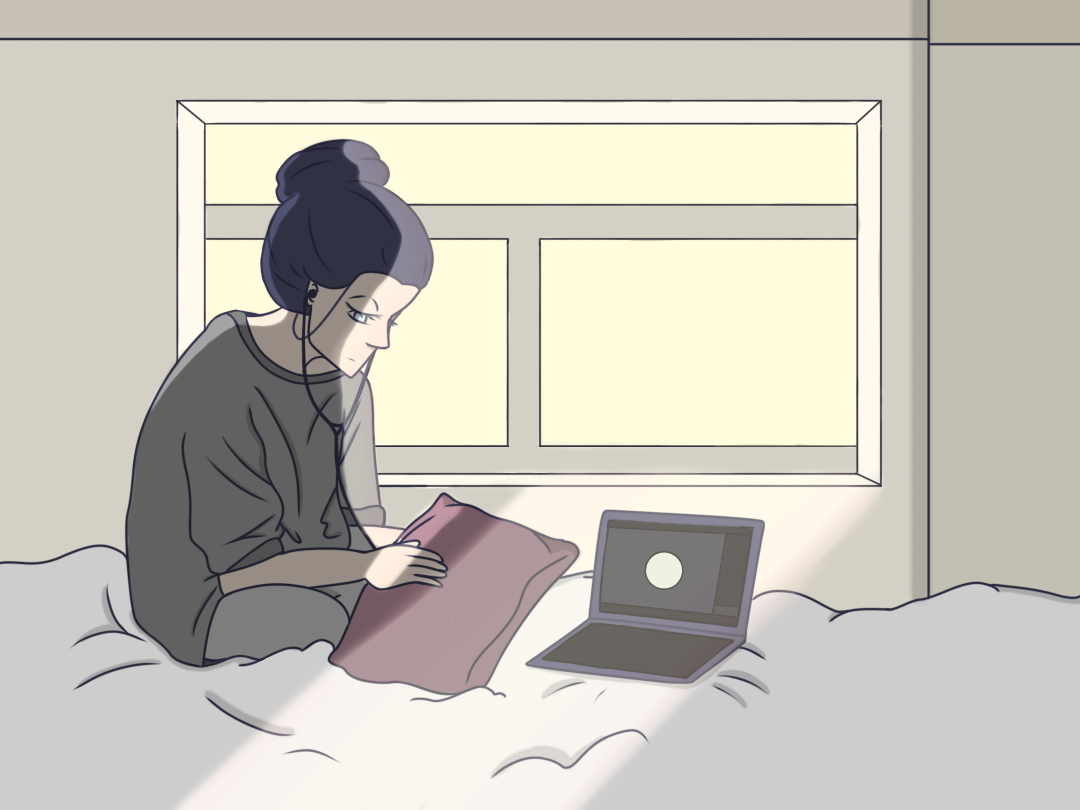Pillow Talk
This year has been perhaps the strangest year for medical students and doctors alike in the last century. However, despite all the government restrictions preventing us from going to lectures, meeting patients, being in hospitals and being able to practice our clinical skills somehow the show has been able to go on in the form of online lectures, Teams and Zoom calls.
This piece aims to illustrate the ways we have been able to cope specifically regarding clinical practice when we are hundreds of miles away from our teachers and unable to meet our patients in person.
As we started our second term, we were all informed that we should purchase a stethoscope for the beginning of our clinical skills practices. This was something I was excited to do, putting any remaining doubt aside that I was now in fact a medical student. At this point in the year the 3rd wave of Covid – 19 in the UK had not yet hit. As a result, we were all under the reasonable assumption that we would get to use our stethoscopes on actual patients.
However, as has been the trend in the last year things didn’t go as expected. The 3rd wave of Covid – 19 prevented us from meeting each other in person and once again everything returned to the laptop/screen. Despite this further interruption, clinical skills training continued in hope of providing us with the essential skills we will need as future clinicians. In the absence of our human patients, we had our stand-in’s…a range of pillows and teddy bears that we used to practice a wide variety of clinical examinations – with very amusing results on occasion.
Ultimately, I hope my image illustrates the creativity and resilience of medical students and our teachers in circumstances that were clearly not ideal.
The medium for this piece of art was a digital drawing on my iPad. I chose this medium as I wanted to produce a piece of art that was visual, giving a small insight into the life of Bristol medical students over the last couple months in a moment of serious yet comedic learning.
I personally learnt that you can still grow as a person and make the steps towards your goals in situations that are not perfect, and that even in those situations there is always something you can laugh about too. In addition to this, I also realized that I am looking forward to face-to-face medicine as a whole. Using ‘Teams’ and ‘Zoom’ online as the primary means of learning and communication is perhaps the best for the time being – however it is poor for building relationships between medical students at the university, and in my personal experience it is not the best for clinical learning either. I look forward to our sessions where we finally get to practice these skills on each other and our patients.
Effective Consulting, Year One, 2021

Online lectures – limits interactivity, and meeting different people
Resonates because last year was like this and so is this yr to an extent
Sitting in room on bed in comfy clothes etc. But not ideal
subject is showcasing resilience – still attempting to do the work despite the situation
Lighting – most of the subject is in the dark – represent being in the dark about course etc.
Light is fleeting but present
This piece illustrates an interesting divide between the negatives and situations of hope in the pandemic.
The nature of the setting – an obscured room with a fairly monotone colour scheme and lack of decoration – conveys the bleakness many would have felt during isolation periods for Covid-19. This is emphasised by the pillow – generally seen as a source of comfort, this being the only option for learning (when typically patients, teachers, friends etc) evokes a visceral feeling of loneliness.
Despite the potentially bleak undertones, the presence of a ray of light shining through the window highlights the existence of hope for change. It is specifically aimed at the laptop/ pillow, suggesting that despite the suboptimal environment, growth can still occur; working towards the goal of becoming a medic is motivating despite the circumstance. The student’s description emphasises this and finishes with stating they look forward to the transition back to working with people – hope for a new day after the pandemic.